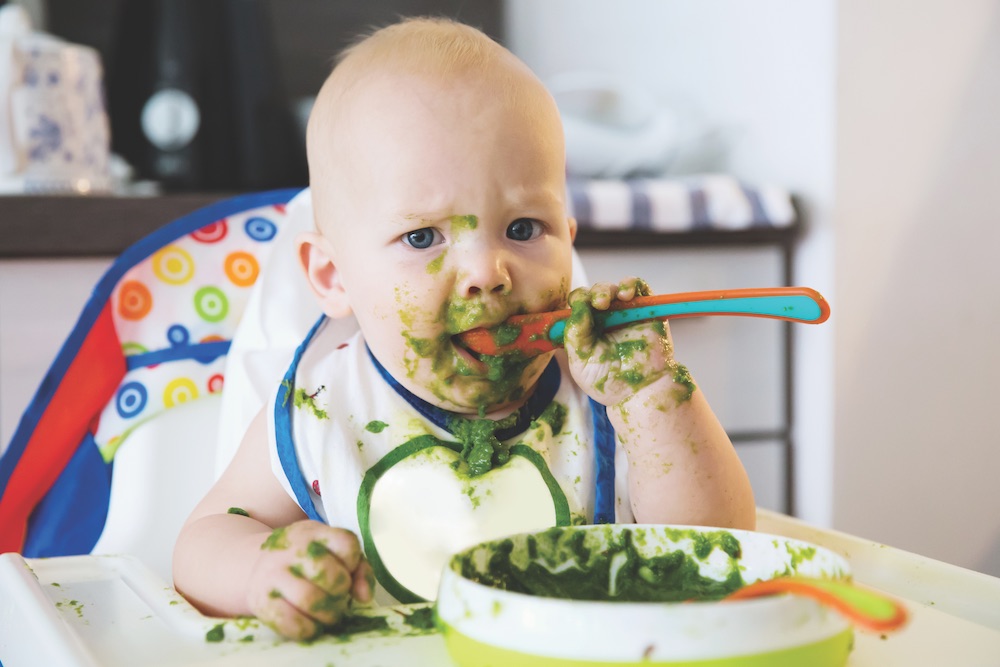Homemade Baby Food Rec’s

Pureed pouches and jars are convenient, but they can cost you more than a few extra pennies. Not only that, it can be a bit of a headache deciphering between added ingredients you may not want in your child’s system. Try taking a stab at whipping up your own baby food concoctions with these easy peasy steps.
Get a blender.
You can mash and stir till the cows come home, but a quality blender or food processor will go a long way in saving you time and getting a consistency that works for babes new to solid foods. These days, they even have contraptions specifically for making homemade baby food, in case you’d rather keep kitchen appliances separate.
Pick what’s in season.
Whether it’s fresh fruit or pre-frozen veggies, choosing seasonal eats will add nutrients, vitamins and flavor to your blends. Summer is ideal for blueberries, peaches and green beans, while winter offers zesty citrus, hearty butternut squash and root veggies like beets. (When possible, buy from local farmers markets!)
Find your fusions.
Don’t feel you have to stick to sweeter flavor profiles for feeding baby. Your tot’s taste buds can develop appreciation for whatever you give him, so get creative with veggie-heavy blends like spinach and kale or single ingredient options like carrot puree. You can also add in yummy starches such as black beans or brown rice. (Just make sure to let your little one’s pediatrician know beforehand to get an official OK on your first foods list or when introducing a new food you’re unsure about.) When it doubt—or when needing to use up produce before it expires, adding in some sweet potato or a banana ups the appeal.
Scoop, store, repeat.
If needed, steaming is a simple way to prime each batch for the blender. Mix well until smooth, and add in water if the contents is overly think. When making large batches, you’ll want to freeze whatever isn’t eaten soon after it’s made. Disperse the remaining contents into ice cube trays, baby food freezer bags (sometimes also used for breast milk) or individual airtight storage containers. If using trays, make sure to transfer to a freezer-safe bag once frozen and clean after use. Keep frozen for up to three months.
Tip: Although your homemade baby food recipes differ, much of the final results may end up looking the same in color. Avoid confusion by labeling each meal (along with the date) to maintain variety. It’s also a good idea chart baby’s reactions to different foods throughout the first year to keep an eye on potential food allergies.







